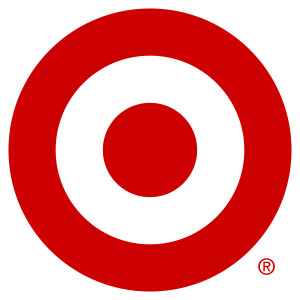
They are the fourth largest retailer in the United States and the second largest discount retailer. They are a part of the Standard & Poor’s 500 Index and rank thirty-sixth on Fortune 500. They rank twenty-second overall on both FORTUNE’s Worlds’ Most Admired Companies and the Harris Poll for Reputation Quotient. Their ranking has improved year over year on each of these lists. Currently, they are well on their way to their stated goal of opening 120 new stores in Canada by the end of 2013. Put together, these indicators paint the picture of a highly successful corporation. However, those are not the reasons that Target is this Friday’s Fearless Brand – they are the result of fearless branding.
Fearless brands stay relevant to their customers needs, wants and expectations.
These lofty accomplishments have not come easily nor quickly, The road to this success has been a long journey.
The company has continually changed, adapted, and innovated since opening in Minneapolis, MN. as the Dayton Dry Goods Company. At that time, 1902, the company was closed on Sundays and would not sell liquor nor advertise in newspapers which accepted liquor ads.
Over the next sixty years the company grew through expansion, acquisition and diversification. Beginning in the 1950’s the company adopted a secular approach for their business, which meant being open on Sundays and selling liquor. The mid-1950’s also saw the company build the first totally enclosed mall in the world to combat the limited selling days due to the frigid Minnesota weather.
Based on the concept of upscale discount retailing, the first Target store was launched in 1962. (Interestingly, this was the same year that Wal-Mart opened its first store.) This concept, developed by John Geisse, proved so successful that the company’s primary focus was placed on growing their Target division. The company was eventually renamed the Target Corporation in August of 2000.
Target – the upscale discounter – today is itself a high-style brand which has been built on a consistent premise of “Expect More – Pay Less”. The Target brand – and its messaging – appeals to everyone who wants great merchandise at a reasonable price. Importantly, it appeals to a great many people who would otherwise never consider shopping at a discount retailer.
Their advertising features clever, eye-catching, contemporary, image-driven visuals and music – it is young, fun, relevant. They have consistently created collaborations with designers – most recently with lines from Phillip Lin and Peter Pilotto. The stores themselves are well lit and feature wide aisles. Perhaps the most important in-store feature is service. It is very easy to find an employee and the common attitude is ‘how can I serve you?’. The checkout lines are typically reasonable in length and wait time is minimized as it seems that registers are opened as needed.
Make no mistake, Target has its shortcomings, its detractors and its customers who get frustrated and disillusioned. Every retail outlet will. One key point of differentiation from their competition however, is Target’s beginning premise of upscale discounting – its promise of Expect More, Pay Less.
Target’s business model – their brand – begins with the commitment of delivering value. They do so by first knowing what their customers want and expect. With Target it is meeting customers’ expectations of quality, value, service and customer satisfaction first – and then delivering it at a fair and reasonable price. They are determined to be relevant to their customer in merchandise, style, environment and service.
It is the commitment to their primary strategy and consistency in execution which make the Target brand fearless – and is their fearless brand which results in the business successes, lists and awards Target has achieved.


It was funny here in Canada. Target bought a bunch of Zellers stores and remodeled. We had heard the hype that Target was this great US thing and really popular.
Target opened and so far everyone is going, “what was all the hype about?” it is just another discount store except more expensive then Walmart.
Goes to show that you need to work on your brand in a new market and not rely on popularity in one market to make the leap.
Always be working on the brand, especially during change.
Thanks for your insights Doug….I knew the Canada expansion would be ‘relevant’ to you. :). Seriously though, what their expansion strategy did was sacrifice some of their branding for the sake of immediate and significant market penetration. They chose to ‘go big and fast’. By acquiring an existing chain and remodeling, they had to overcome whatever impressions existed from those stores in addition to seating the Target brand. I have no knowledge of how Wal-Mart has positioned in Canada so I have no basis of comparison between the two. My experience tells me that in rather quick order the differentiation of Target’s execution of product, in-store environment, marketing and services will become quite clear.